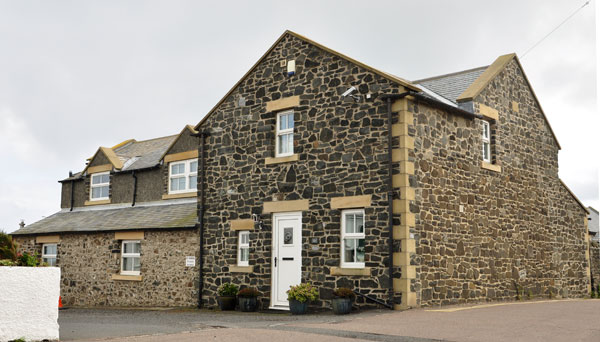 |
|
Archway - Tower Bank |
Coquet View
Written in 1957, Eva Archbold's history of the village notes: "The house Coquet View (See page 14 re Coquet View) occupied by Kenneth Robson was lived in by a fish curer – George Steel who built the herring shed near. The sheds were built in 1856. My father’s family used to live in it before going to Blyth. Bessie Durham (George Scott the butcher’s sister) and family lived in it. It was renovated and bathroom added after 1939-45 war. At one time (before my day) it also had post box in east end. Also before my day the site for the herring shed was all gardens. The gardens were for the folks in the square or to use the old name “cortin”...... This house was one storey and had red pan tiled roof. Jack Mason and his wife Mary nee Archbold but commonly called Mary Mason and later ‘Aad Mare’ lived in it. In 1878 she moved out and went into the cabin end of the Summer House. It was only one room with a loft Bill Sailor (or William Archbold right name) heightened it for himself...... I am told that Craster kippers were first made by a man called Jack Mason who came from Tweedmouth. This Jack Mason married Mary Archbold my grand-father’s (John Archbold, Crappy) aunt. They lived in Coquet view as stated on Page 14. This house, Coquet View, very old. In the process of renovation it was found that the masonry showed old methods. Walls very thick and were just stones and rubble – no lime. Their thickness kept them up I was told by a mason." In 'We Can Mind the Time', Joan Angus dates the construction of Coquet View to 1860. |
 |
Home Programme Membership Archive War Memorials History Walk Miscellanea Links Contact Us
